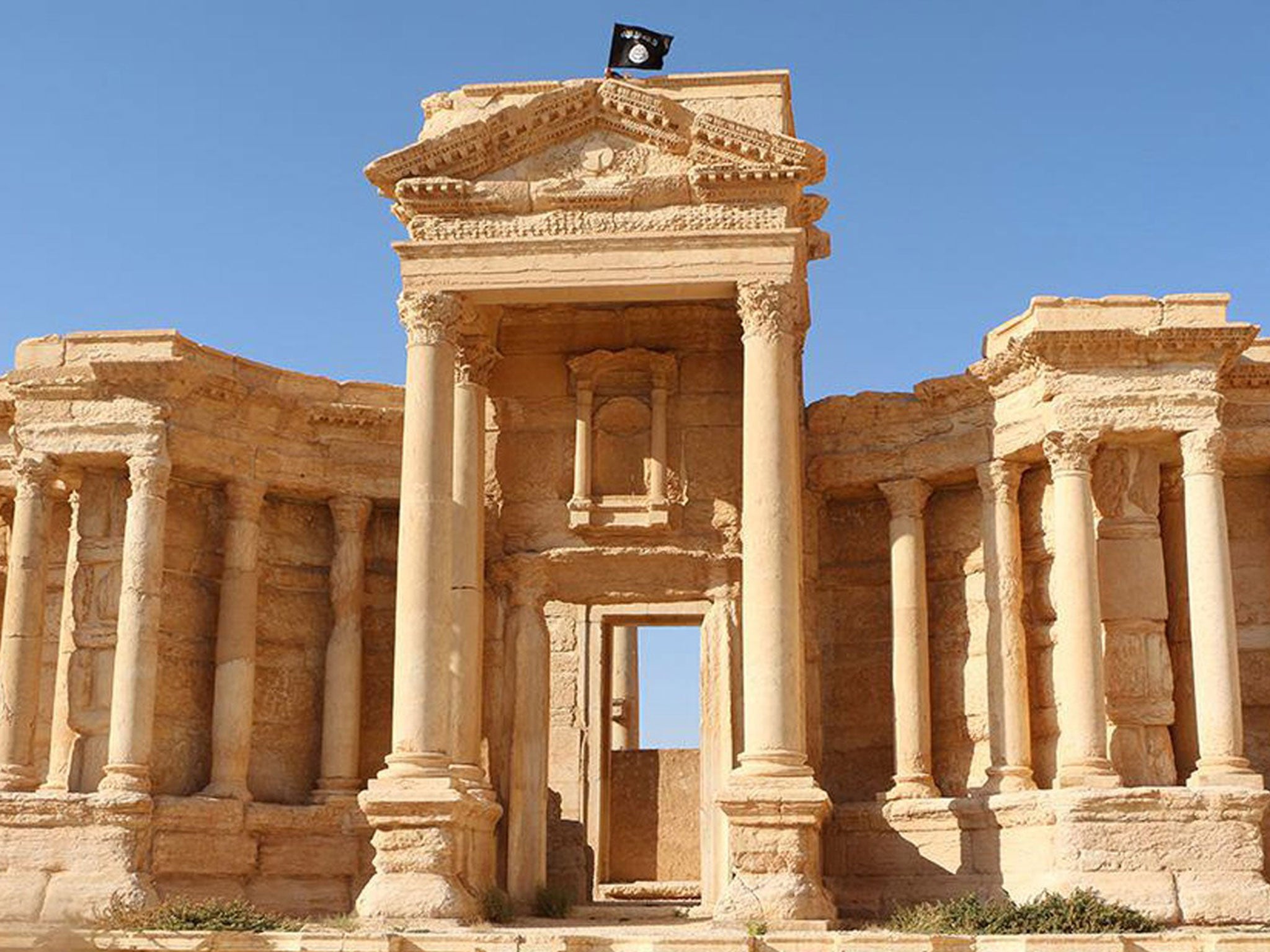Isis in Palmyra: The two images that show what the so-called 'Islamic State' is doing to thousands of years of human knowledge
Once a venue for cultural events, the Roman Theatre at Palmyra has been turned into a backdrop for brutal executions by jihadist militants

They are the images that show how far Palmyra has fallen. Once famous for its annual cultural festival, the UNESCO world heritage site was the backdrop for a video released by Isis this weekend purporting to show the murder of 25 Syrian soldiers.
When the Syrian government’s forces fell back and Isis captured the city on 20 May, concerns were divided between the ancient Roman ruins left behind and the civilians and captive soldiers who faced a massacre.
Isis leaders have since hinted in the group’s media releases that they will destroy some statues at Palmyra but leave the bulk of the ruins intact.
Yet the mass executions have now taken place as expected, prompting commentators on Twitter to compare Syria under Isis’s control with how it was under the government of Bashar al-Assad.
Built in the second century AD, the Roman Theatre at Palmyra was restored in modern times and has been used for cultural events in recent years.
Before the outbreak of the civil war, the site in the heart of the Syrian desert came alive at the start of May every year for the Palmyra Festival, when the theatre was lit up at night for folk music performances and camel racing took place during the day.
To paint the city as a desert idyll under the Assad government would be unfair. The modern settlement adjacent to Palmyra – Tadmur – is most famous for its prison, where thousands of often political dissidents were held in brutal conditions.
Experts have warned against letting Isis’s very public atrocities distract from the fact that they have killed only a fraction of the 200,000 feared to have been quietly disappeared or murdered by the Syrian government itself.
But the contrast between the images of the Syrian ballet and the execution of 25 soldiers – Palmyra “before and after Isis” – is nonetheless a powerful reminder of the latest terrible result of the country’s long internal conflict.
Join our commenting forum
Join thought-provoking conversations, follow other Independent readers and see their replies
0Comments